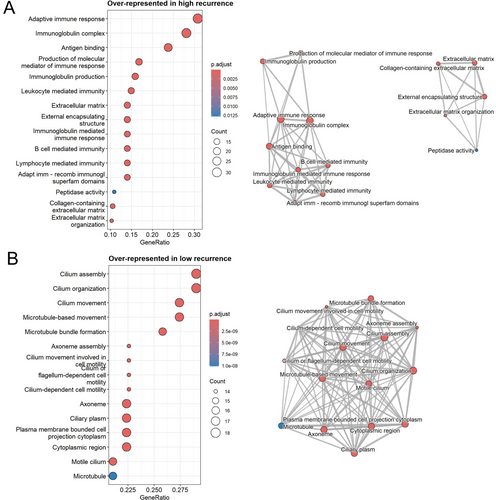Abstract
Objective: Idiopathic subglottic stenosis (iSGS) is a rare disease characterized by narrowing of the upper airway and affects near-exclusively females. Patients often experience recurrent disease and require repeated surgical dilations. The pathophysiology underlying the broad spectrum of disease severity within iSGS remains unknown. In the current study, we sought to identify transcriptomic differences between iSGS patients with markedly different recurrence rates.
Methods: Prospectively collected clinical and bulk RNA sequencing data from subglottic tissues of 56 female iSGS patients with 1-4 years of follow-up were analyzed. DESeq2 was used to perform differential expression analysis, comparing samples from the highest (1.19-1.87 dilations/year) versus the lowest (0.30-0.65 dilations/year) quartile of surgical dilation rate (i.e., high vs. low recurrence groups).
Results: In total, 220 genes were significantly differentially expressed between the high and low recurrence groups (adjusted p < 0.1 and absolute log2 fold change > 1). Pathway enrichment analyses showed that the high recurrence group had significantly increased expression of genes involved in adaptive immune responses (e.g., immunoglobulin subunit genes) and extracellular matrix organization (e.g., COMP, NID2) (adjusted p < 0.1). In contrast, the low recurrence group had significantly increased expression of genes involved in cilia structure and function (e.g., CFAP43, DNAI2) (adjusted p < 0.1), suggesting a relatively increased abundance of respiratory cilia.
Conclusion: Transcriptomic profiling suggests that lower recurrence rates in iSGS are associated with retention of respiratory cilia, while adaptive immune responses and increased extracellular matrix deposition are present in those with higher recurrence rates. These results hold promise for the development of prognostic markers and identification of therapeutic targets for iSGS.
Keywords: B cell; RNA sequencing; adaptive immunity; extracellular matrix; fibrosis; idiopathic subglottic stenosis (iSGS); surgical endoscopic dilation.
